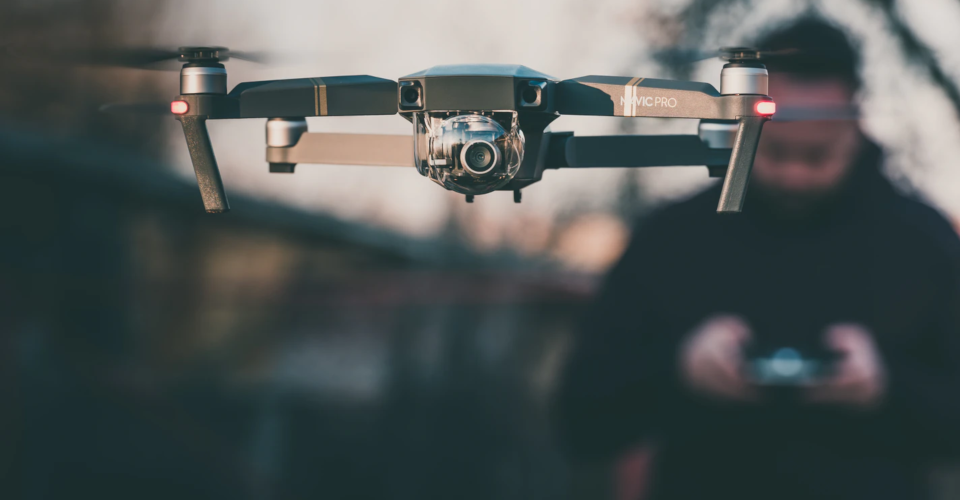Drone Fundamentals – The Different Functions that Make Drones Work
A huge factor in how drones have become incredibly popular in the last couple of years is the fact that they are incredibly easy to fly. Using just a pair of analog sticks, flying a drone is only a little more complicated than controlling an RC car. This focus on ease of use belies the fundamentals of what makes a drone work – a network of closely coordinated functions made possible by sophisticated technology inside the drone.
Knowledge of the physics and technology of drones is essential for drone pilots at any level of expertise. Whether you’re into tinkering with drones or simply flying them, this guide to how drones work should be an interesting read.
Flight
Let’s start with the most basic question: how does a drone fly? We’ve all seen helicopters in real life or in movies, so it doesn’t exactly astound anyone to see drones flying using their spinning propellers. Drones are unique, however, in that they have more than just one propeller. Most drones have four, quite a few have six, and very rare models have up to eight.
To make this discussion more organized, let’s look at each of the drone components that allow it to fly – its propellers, motors, and the Electronic Speed Controller (ESC).
Propellers
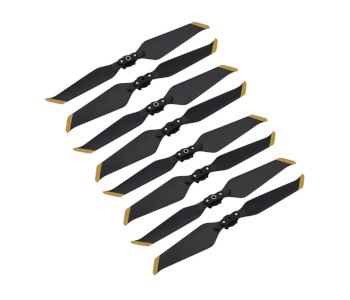
Why does a drone, despite its size, need more than one propeller? There are several reasons, but these can be simplified into three main objectives – lift, stability, and propulsion.
Lift is the easiest to define. Basically, the rotation of the propellers cut through the air in the atmosphere and redirects it downward, thus allowing the drone to gain altitude. The speed of the propellers’ rotation, as well as their shape and size, have a very significant effect on the rate at which drones can ascend and how much load they can carry.
One thing to note about the several propellers of a drone is that they don’t all rotate in the direction or at equal speeds. When any of the propellers rotate, it exerts an equal rotational force on the body of the drone oriented in the opposite direction. If left unchecked, this rotational force can lead to the drone spinning out of control. This is a demonstration of the law of action and reaction, more officially known as Newton’s third law.
To counteract the rotational force that a single propeller exerts on the drone, one other propeller in the assembly needs to rotate in the opposite direction. This becomes a carefully coordinated dance between the several propellers in a drone’s assembly.
Lastly, the differential rotation speeds of a drone also give it propulsion. For instance, moving a drone forward requires that its rear propellers rotate faster, thus giving the “push” to propel forward. This same concept applies to every pitch, yaw, and roll that a drone makes.
Varying the speed of propeller rotation to make a drone move in any direction, all while maintaining stable flight and altitude, requires advanced control systems. This is mostly invisible to the drone pilot, as all they have to do is to move their analog sticks.
Motors
Powering the rotation of each propeller in a drone is a motor. Most drones sold today use a brushless type motor with permanent magnets. This motor is designed to require very little maintenance as there are no contact points between the rotor and stator, reducing natural wear and tear. They are also quieter and are not as prone to overheating even when rotating at high speeds.
The fundamentals of a brushless motor used in drones aren’t any different from your standard permanent magnet AC motor. The outer stator consists of several conductive coils that generate a magnetic field when a current is passed through them. The permanent magnet in the rotor then reacts to this magnetic field, rotating by a fixed interval depending on the magnetic field orientation.
The stator of a brushed motor has several such conductive coils thus creating “steps” for the rotation of the rotor. Through this mechanism, the speed of rotation of a propeller can be controlled by regulating the frequency of current signals sent to the stator coils.
ESC
The Electronic Speed Controller (ESC) is considered the “brain” of a drone’s flight module. It is responsible for sending the signals that power the stator coils of every motor, thus controlling the speed of each of the propellers. The ESC mostly responds to user input but can also act autonomously based on information received from the drone’s onboard sensors.
ESCs are some of the most complicated components on a drone and has become one of the frontiers of drone technology advancement. The move to 32-bit ESCs and the development of dynamic braking are just some of the few innovative changes that have been made to drone ESCs in the last decade. Each of these upgrades has made far-reaching benefits to drones – from improved battery life to smoother flight and reduced propeller noise.
Communication
A drone may have a lot of sensors and autonomous functions, but its primary objective is to move based on the pilot’s commands. For this to happen, a drone must have a means of communicating with the remote controller that is in the hands of the pilot. There are two ways that drones do this – either through Wi-Fi or radio waves.
Wi-Fi
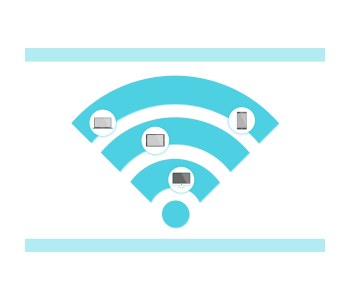
Despite being the newer technology, integrating a Wi-Fi transmitter in a drone is actually the cheaper option. It’s also a very simple control mechanism, as it means that a drone can be controlled using just a smartphone or tablet.
The main reason why there aren’t many drones that rely on Wi-Fi is that it has a very limited range. The range of Wi-Fi is nowhere near the range of radio waves, making it Wi-Fi only appropriate for beginner drones or toy drones.
Although Wi-Fi in itself is also a form of radio communication, it uses specific modulation and networking standards that make them less prone to interference. Wi-Fi also allows for two-way communication. However, the range of Wi-Fi is limited to the magnitude of around 100 meters – a far cry from the thousands of meters that radio waves can reach.
Radio communication
A huge majority of drones available today communicate with their respective remote controllers via radio waves. Aside from providing control for the drone’s movements, drones also use radio waves to transmit real-time video from the onboard camera to a controller’s integrated video display. A controller needs to be paired with a drone via radio frequency identification (RFID) before use.
Drones use either the 2.4 or 5.8 GHz frequency bands to communicate. Drones with dual-band transmission can switch between any of the two bands instantly, depending on which has a stronger signal or is less crowded. Single-frequency drones are typically cheaper but are more prone to loss of signal.
The frequency bands used by drones are the same ones used by just about every other wireless electronic device. These are the frequency bands that have been allocated for unlicensed use – or the so-called “non-ISM (industrial, scientific, or medical” applications. The list of devices that use the 2.4 and 5.8 GHz frequencies is very long and includes smartphones, laptops, tablets, baby monitors, wireless surveillance systems, and keyless entry systems.
As such, there is always a possibility of signal interference causing deterioration of control over a drone. This is typically momentary and can be remedied by the auto-switching of frequency bands. Advances in transmission technology have allowed drone manufacturers to release models with expanded controller range.
Location and orientation
A drone pilot might feel that they are in total control of the drone, but the truth is that there are so many things happening under the hood of a drone that makes flying it so much easier. A drone’s array of sensors continuously collect data about its surroundings and use these to make sure that it always remains stable and flies according to a pre-determined plan.
To demonstrate this idea, here is a minimum list of sensors that are considered standard features in all modern drones.
GNSS (GPS or GLONASS)
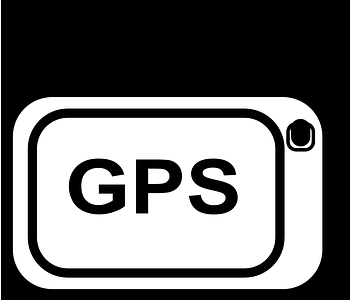
A GNSS receiver is used by a drone to determine its exact location based on a satellite-based global tracking system. It works by receiving signals from several satellites in orbit above the Earth and using the data to triangulate the drone’s location. Most drones have receivers for both the GPS and GLONASS networks – these are just different satellite networks owned by the US and Russia, respectively.
These satellite networks are collectively known as GNSS or Global Navigation Satellite Systems.
GNSS capabilities are used by drones in two ways. The most fundamental function is for flight stability, especially in drones with a built-in Altitude Hold feature. This simply tells the drone to maintain a stable hover while the pilot either takes a break or frames a shot. In Altitude Hold mode, the drone determines a fixed GNSS position and makes the necessary corrections to make sure that it holds the position.
The ability of the drone to accurately determine its GNSS location also comes into play when programming the drone to fly along a pre-determined flight path. This basically instructs the drone to fly to specific waypoints or markers. By comparing the drone’s current GNSS location to its target coordinates, the drone automatically knowns which direction to fly towards.
Gyroscopes
Gyroscopes are so cheap and simple that they are now staple features in our phones. It is hardly surprising that virtually all drones, even the cheap toy drones that cost less than $20, come with gyroscopes. One of the most rudimentary drone sensors, gyroscopes can detect any angular or rotation motion that a drone makes.
On a fundamental level, a gyroscope only consists of a spinning disk mounted on a movable frame. This frame can tilt and rotate while the drone moves, while the spinning disk remains on a fixed axis on account of its constant rotation. The difference between the orientations of the disk and the moving frame becomes the basis for determining the angular movement of any device – in this case, a drone.
Data collected from the gyroscope can serve as a means for both control and stability. When there is no input from the pilot, any unwanted angular rotation in any axis needs to be corrected for the drone to maintain a stable hover. If a pilot issues a command for the drone to pitch, roll, or yaw, data from the gyroscope will confirm that the drone is moving as expected.
Accelerometer
An accelerometer is the natural partner of a gyroscope. While the gyroscope is responsible for determining the direction at which the drone is moving, the accelerometer collects data that determines by how much the drone moves. This works on both rotation motion and linear movement. Most smartphones also come with accelerometers, thus allowing them to detect linear movement or even something as subtle as shaking a phone.
At the heart of an accelerometer is a piezoelectric crystal. This is a microscopic crystal that releases a very small current when it undergoes stress. Piezoelectric crystals can be found in many applications that require the transformation of a physical force to an electrical signal, such as in motion detectors, digital weighing scales, and electric guitars.
A drone isn’t equipped with just a single accelerometer. Instead, a drone will have at least three accelerometers – one oriented in each axis. Accelerometers work in the same way as gyroscopes in that they act both to maintain stability and to ensure that the drone executes the commands from the drone pilot.
This combination of a 3-axis accelerometer and a 3-axis gyroscope is what drone manufacturers commonly refer to as 6-axis gyro stabilization. Considered essential for professional drone photography and filmmaking, this technology has made its way to inexpensive beginner drones and have contributed greatly to making drones a lot more user-friendly.
Magnetometer
Magnetometers are no longer as common in drones nowadays because of how inexpensive and accessible GPS receivers have become. To put it simply, a magnetometer act as ana alternative to a GPS receiver in cases where GPS signals are weak. A magnetometer can estimate its location relative to the magnetic North by detecting and measuring magnetic fields.
The major limitation of a magnetometer is the fact that it is also sensitive to magnetic fields other than the natural one exerted by the Earth’s poles. Just about any electrical device with an active current flow emits a magnetic field, the intensity of which depends on the strength of the current. This can be enough to interfere with the locational capabilities of a magnetometer.
Together with the accelerometer and gyroscope, the magnetometer is typically considered as a crucial component of a drone’s inertial measurement unit (IMU). IMUs are a pretty old technology that has long been used for navigation in aircraft and ships. Through a technique called ‘dead reckoning’, IMUs allow a drone to approximate its location even in the absence of a GPS signal.
Barometer
A barometer is simply a tool that measures air pressure. In drones, this air pressure reading is indirectly used to estimate the drone’s altitude relative to sea level. This is based on the concept of the air pressure dropping proportionally as the drone gains altitude. A barometer is a simple sensor that relies on a fundamental scientific principle.
While GPS signals can also provide feedback on a drone’s altitude, a barometer is a much more foolproof and faster means of measurement. A barometer needs to be calibrated periodically at sea level.
PID Controller
All these sensors only collect data from the drone’s environment, but where does all this data go? The proportional-integral-derivative (PID) controller is the brain that processes data from all of its sensors. Based on the data, the PID controller then sends signals to the drone’s ESC to make the necessary corrections in terms of location, orientation, or movement.
The operations of a PID controller depends on the identification of two states – a current state and the desired state. This applies to several parameters of drone operations including its position, altitude, the direction of flight, speed, and orientation. If there are discrepancies between the current state and desired state, the PID controller makes the necessary adjustments so that the desired state can be achieved.
The algorithms that a PID controller uses to make the adjustments are highly mathematical nature. There are three approaches, as implied by the name of the technology – proportional, derivative, and integral. None of these algorithms are perfect, but they work together to allow for corrections that are as quick and accurate as possible.
Obstacle detection
Obstacle detection used to be exclusive to higher-end drones but are now becoming a lot more common. The technology for obstacle detection and avoidance systems has grown by a lot in the last couple of years. Not only are they smarter and more sensitive, but they are now also more accessible for mid-priced drones. Exactly how does obstacle detection work?
There’s not a single answer to that question, as this is one frontier in which different drone brands have been competing. In any case, just about all obstacle detection systems used nowadays use a combination of these technologies:
Visual sensors

The simplest way for a drone to obstacles is to see them using visual sensors, which are basically cameras. Visual obstacle detection goes as far back as the original Mavic Pro, which was launched almost four years ago.
The advantage of visual sensors is that they are pretty inexpensive and easy to implement. The drawback is that it can only detect highly visible obstacles – very small and thin obstacles like power lines and tree branches can be missed. Drones that rely on visual obstacle detection also have trouble when flying in the dark or near reflective surfaces. For these reasons, modern drones typically combine visual sensors with other sensor types.
Infrared sensors
An infrared sensor is simply another type of camera that is sensitive to energy in the infrared frequency range. This allows them to “see” the infrared signature of various objects naturally emit – even those that are invisible to a visual sensor. Adding an infrared sensor massively expands the capabilities of an obstacle detection system, making it usable even in darkness.
However, an infrared sensor is still infallible. Although almost all objects emit an infrared signature, some are simply too thin or too small to make these signatures visible. A thin plastic sheet, for example, is practically invisible under an infrared camera.
Ultrasonic sensors
Bats are excellent fliers even though they are blind. This is already a clue to how ultrasonic sensors work. They send ultrasonic pulses which are then reflected if they hit a potential obstacle. These are typically inaudible sound waves at frequencies above 20 kHz. Using time-of-flight calculations, the power of an ultrasonic sensor is that it can also determine how far away the said obstacle is.
Ultrasonic sensors can be very powerful when trying to fly in barely visible conditions. It is not affected by conditions that diminish visibility such as fog or dust. However, it also suffers from limited sensitivity when it comes to very small obstacles. Its reliance on reflected signals also makes it vulnerable to errors when attempting to detect obstacles with highly curved surfaces.
AI-aided obstacle detection and avoidance
In the past couple of years, we have witnessed several drone brands stepping up to the plate in the field of obstacle detection and avoidance technology. These innovative efforts come in different names – the Intel RealSense by Yuneec, the Advanced Pilot Assistance System by DJI, and the 360 Obstacle Avoidance by Autel.
All these technologies are based on the concept of the data collected by the various sensors being used to create a 3D model of the drone’s environment. The Skydio 2, a drone that has been lauded because of its autonomous flight capabilities, uses an array of six 4K cameras to achieve the same effect.
This is the most comprehensive way of detecting and avoiding obstacles that we have seen so far. For this to be possible, modern drones need to be equipped with a powerful internal processor that can perform real-time 3D modeling based on the input data.
Such systems don’t just enhance obstacle detection. Through the help of onboard AI, the drone can come with the safest flight trajectory to avoid the obstacles while still maintaining operation objectives. Whether it’s to follow a moving subject or to fly along a pre-determined flight path, advancements in obstacle detection and avoidance are a huge step towards truly autonomous drone flight.
Power

There’s isn’t a lot that needs to be said when it comes to the power requirements of a drone. The primary power consumption of the drone is in the current draw that the motors need to rotate the propellers, thus keeping it airborne. However, just about every component of a drone also requires power to function. This includes the ESC board, PID controller, the various sensors, the GPS receiver, the camera and gimbal, or any customized payload that you may attach to the drone.
Just about all drones nowadays use lithium polymer (Li-Po) batteries. This has become the battery of choice because its unique construction allows it to be very light and compact without compromising capacity. Li-Po batteries used to be common only in RC cars but have since become used in laptops, tablets, and other mobile electronic devices.
Many drone brands now come with batteries that have “intelligent” features. This simply means that these batteries come with a way to provide feedback to the pilot and the drone about its current power levels. This typically functions with a drone’s “Return to Home” function which has the drone automatically fly back to a pre-determined landing site should it detect critical levels from the battery.
Although the unique characteristics of Li-Po batteries make them highly suitable for drone use, they are also known to be very fragile and prone to damage. There is no shortage of reports of devices with Li-Po batteries exploding or catching fire, sometimes with no discernible reason. Thus, drone pilots are advised to exercise caution during charging, storage, or transportation of Li-Po batteries. Make sure to use Li-Po safe containers and to always keep an eye on them while they are charging.
Camera and gimbal
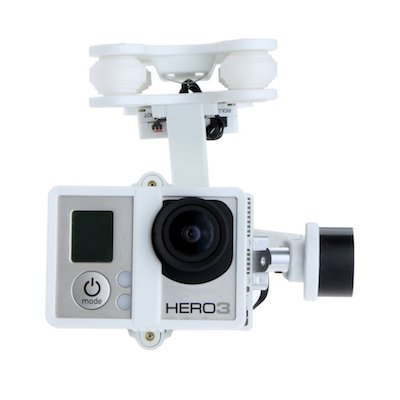
Drones aren’t all about their high-resolution cameras but there’s no doubt that aerial photography is the main reason why people buy drones. Whether it’s done professionally or for fun, being able to take nice aerial photos with nothing more than a portable flying machine is an activity that does not lose its novelty. Some industry experts even believe that drones can take the place of digital cameras as essential items when going on a vacation.
As one can imagine, mounting a camera on a flying drone will just result in images and videos that are very jittery. To make up for all the extraneous movements and vibrations of a drone, mid-range to high-end drones come with mechanical gimbals.
With its own array of motion sensors, gimbals have small motors that actively attempt to correct any extraneous motion from the drone. This results in smooth images and videos at a quality that simply cannot be equaled by even the best electronic image stabilization algorithms.
A drone camera is useful not just for aerial imagery. By delivering real-time video the pilot’s video display, the drone’s camera can also be useful for fine-tuned navigation. This can be taken to the next level by flying using FPV (First Person View) goggles. This is the most immersive way to fly a drone. Just a word of warning, though – you are required to have a visual observer to keep their eye on a drone if you’re flying in FPV.
There are also a couple of other ways in which aerial imagery can be useful beyond merely taking photos. Photogrammetry is a 3D mapping technique that uses only a series of overlapping images of the same subject taken at different angles. By processing images with embedded spatial data, photogrammetry software can deduce the size and shape of individual features in the survey area.
Other trends in drone technology
What we have discussed here are just some of the basic features that come with most drones. We have barely scratched the surface of what drones are capable of nowadays, especially with all the developments we’ve seen in the last couple of years. There are too many of them to discuss in detail, but here are a few highlights:
- Drones that can identify specific subjects in their cameras and track them while they move
- Drones with interchangeable payload provisions, allowing quick swapping of payload options like highspeed cameras, thermal cameras, and multispectral sensors
- Drones designed with SDKs that allow for customized coding, giving control to the user to program the drone with exactly the type of automatic features they need
- Drones with Real-Time Kinematic (RTK) modules which is a more accurate technology for aerial mapping
- Drones with automatic geofencing features that prevent them from taking off or entering into designated No-Fly Zones
- Drones with ADS-B receivers that can detect the presence of nearby manned aircraft, allowing the drone pilot to maneuver them out of the way.
- Extremely powerful drones that can lift a payload that weighs up to 10 kilograms
As with any tech-based market, innovation is the name of the game when it comes to drones. As the market for commercial drone services becomes more profitable, we expect even more creative features to come from some of the top drone brands.
Final thoughts
Drones are a wonder of modern technology – an intricately coordinated collaboration between different electrical and mechanical components that makes a complex operation seem simple. The most impressive thing about a drone, more than the fact that it can fly, is that it’s very easy to operate.
A huge factor in drones being user-friendly is the fact that they are “smart.” They can take the data from its various sensors, process the data, and make alterations to a drone’s flight patterns automatically. This eases off a lot of the pressure from the pilot so they focus on the more fun things, like taking photos or just flying wherever they want to.
With so many new innovations on the horizon, it seems like we’ve yet to see the limits of what is possible with drone technology. The fundamentals will always be the same, but there are still so many ways in which drone flight can be made more commercially useful, inclusive, and safer.

